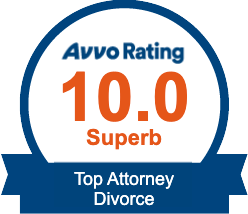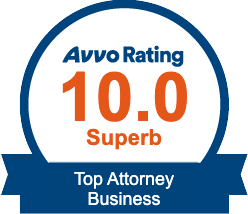We have received many questions from clients regarding the treatment of pass-through entities under the Tax Cuts and Jobs Act (TCJA). Pass-through entities include partnerships, S corporations, limited liability companies (LLCs) and sole proprietors. These entities are called “pass-through” because the income from them flows through to the owners and is taxed on the owners’ income tax returns and individual tax rates.
Under the TCJA, tax rates for individuals are generally lowered over seven brackets, featuring a top tax rate of 37%. The TCJA also lower the corporate tax rate, which C corporations will be taxed at, to a flat rate of 21%. This means that C corporations may now pay a considerably lower tax rate than individuals. To address this issue, the TCJA provides a deduction of up to 20% for pass-through entities on “qualified business income” (QBI). The size of the deduction will vary depending on the nature of the business activity and the total income of its owner. The deduction will also vary depending on the business’ w-2 wages and how much depreciable property it owns.
QBI is generally defined as net income from the business without including amounts in the nature of compensation. Compensation includes any salaries to S corporation owners, and guaranteed payments allocated to partners in a partnership or members of an LLC. QBI also excludes any investment income such as capital gains, both long and short-term, dividends, and investment interest income. Finally, QBI is calculated separately for each business activity rather than on a per-taxpayer basis.
The TCJA has three main considerations for claiming the deduction, the amount of income the owner earns, the type of business, and the wages and capital the business has. With regards to the type of business, the Act divides pass-through businesses into two classes: those that provide certain personal services, such as law firms, medical practices, consulting firms, and professional athletes (not including architects and engineering); and all other businesses.
The levels of owner’s income that affect the deduction under the Act are as follows:
- Single filers making less than $157,500 or joint filers making less than $315,000 in total taxable income. These filers may take the full 20% deduction, regardless of the type of business.
- Those filers with incomes above $157,500 but less than $207,500 or joint filers making above $315,000 or less than $415,000 in total taxable are only eligible for a partial deduction. For personal service businesses the deduction is reduced pro-rata. For all other businesses, the deduction may be limited based on the amount of wages and property it owns.
- Singles filers making more than $207,500 or couples making more than $415,000 the deduction depends on the type of business. For owners of personal service companies, these files are not allowed a deduction. For all other businesses, the deduction may be limited based on the amount of wages and property it owns.
As one can see, the rule is pretty simple for a defined personal service business. If your income is below the lower threshold, you get the 20% deduction. If your income is between the lower and upper threshold, the deduction is reduced pro-rata until it is phased out completely. If your income is above the upper threshold, there is no deduction.
For non-personal service businesses, if your income is below the lower threshold, you get the 20% deduction. If your income is between the lower and upper threshold, there is a wage and capital limit. Under the wage and capital limit the deduction is limited to the lesser of 20% of QBI or the greater of 50% of W-2 wages for the business or the sum of 25% of W-2 wages and 2.5% of the unadjusted basis of all qualified business property. Qualified business property defined as any tangible property for which depreciation deductions are allowed under IRC Section 167, that was held by and used in the business, and hasn’t already reached the end of the depreciable period. Unadjusted basis would be the basis before depreciation. This wage and capital limit is phased-in pro-rata based on the same income thresholds as the limits stated above. Once income exceeds the upper threshold, the phase-in of the limit is complete.
Example 1:
Assume that a wife earns $100,000 of w-2 wages and husband runs a business with income of $100,000 and business wages of $40,000 and no qualified business property and they file jointly. In this case, because the couple earns less than the $315,000 threshold, they can deduct 20% of the business income or $20,000.
Example 2:
Assume that a wife earns $250,000 of w-2 wages and husband runs a business with income of $100,000 and business wages of $30,000 and no qualified business property and they file jointly In this case, if it is a personal service business, the deduction is phased out pro-rata to 13% or $13,000 ($415,000 – $350,000 = $65,000; $65,000/$100,000 = 65%; 65% of 20% is 13%).
If it is not a personal service business, the deduction is limited to 50% of the $30,000 in wages, or $15,000 limit. Therefore, there is reduction of $5,000 due to the wage and capital limit. But because they are only 35% of the way through the limit phase in ($350,000 – $315,000 = $35,000; $35,000/$100,000 = 35%), then the reduction is limited to 35% of $5,000 or $1,750. Therefore, the deduction is $20,000 – $1,750 or $18,250.
Example 3
Assume that a wife earns $315,000 of w-2 wages and husband runs a business with income of $100,000 and business wages of $30,000 and no qualified business property and they file jointly In this case, if it is a personal service business, the couple makes $415,000 and the deduction is completely phased out.
If it is not a personal service business, the deduction is limited to 50% of the $30,000 in wages, or $15,000 limit. Therefore, there is reduction of $5,000 due to the wage and capital limit. But because they are only 100% of the way through the limit phase in ($415,000 – $315,000 = $100,000; $100,000/$100,000 = 100%), then the reduction is 100% of $5,000. Therefore, the final deduction is limited to $15,000.
Example 4
Assume that a non-personal service business has income of $1,000,000 and wages of $450,000. The wage limit is 50% of $450,000 or $225,000. The deduction is limited to $20% of $1,000,000 or $200,000. Because the wage limit is above the 20% limit, the owner is entitled to take the 20% deduction.
A few final notes on the deduction
- The deduction is not an above-the-line deduction that reduces Adjusted Gross Income. Instead, it is a “below-the-line” deduction. This means that the deduction can be taken regardless of whether the taxpayer itemizes or claims the standard deduction.
- The deduction is also limited to 20% of the household’s taxable income (i.e., income after all deductions, but before the QBI deduction itself).
- For those who are subject to the Alternative Minimum Tax (AMT), the QBI deduction is also available for AMT purposes.
If you have any questions regarding pass-through entities under the TCJA or need assistance in forming, dissolving or administering a pass-through entity, the attorneys at Allison & Mosby-Scott can help. Please call us at 309-662-5084 or visit our website at www.allisonmosby-scott.com.







